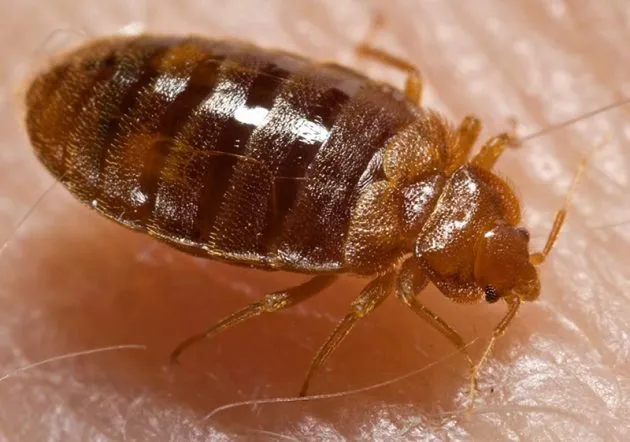How to Kill Bed Bugs with Heat

Bed bugs are tiny parasitic insects that are usually found in mattresses. They can also hide in folds or creases of bed linen, gaps in bed frames and other soft furniture pieces, such as sofas and chairs. Bed bugs feed on animal and human blood, sensing their victim’s body temperature while it sleeps and the carbon dioxide it exhales. When they locate their target, they bite exposed flesh with an elongated beak. In addition, they multiply quickly, with adult female bed bugs having the ability to lay up to 200 eggs every couple of months.
Bed bugs are an extremely difficult pest to control because modern populations are hard to access and they’ve developed high resistance to pesticides. Luckily, experts have developed many safe and efficient methods to treat them. One of the most effective known methods to do that is heat.
Killing Bed Bugs With Heat
One of the most effective methods for treating bed bug infestations is to kill them with heat. It has been proven that high temperatures can eliminate bed bugs at any stage of their life cycle, including their eggs. However, simply turning the heating in your home up won’t solve such a pest problem because it doesn’t count as heat treatment. Research has determined that the death point for bed bugs treated with heat depends on two factors: temperature and exposure time. Your house should be heated up to at least 50 degrees Celsius for at least an hour for the bed bugs to reach mortality. Besides, every surface in your house will need to be heated equally for this method to work, which is practically impossible.
The research carried out on bed bug heat treatment has been successful due to the use of powerful fans to create convection currents within a heated room. These currents heat the insects rapidly and increase their mortality.
To kill bed bugs with heat, it’s recommended to call pest control professionals because they’ll have all the necessary tools, equipment, and knowledge to do it right. However, it’s also possible to deal with the situation yourself.
Steam Cleaning
If you want to perform a complete heat treatment yourself, you can use a commercial steam cleaner. You can also rent such an appliance if you don’t own one. Before you use it, ensure you’re familiar with the label’s safety instructions. Steam clean all the areas you suspect to be infested by bed bugs. The surfaces you apply steam to should reach a temperature of 80 degrees Celsius. Anything lower will be ineffective, and the bed bugs will survive.
Pest management companies typically use steam as a part of their extermination process. It’s mainly used in areas where pesticide application is undesirable. However, steaming is a slow and methodical process that requires a lot of patience. The pest technician moves slowly enough, so the heat maintains a concentration level over every part of the surface. Besides that, the head on the steamer needs to be large enough to avoid the steam coming out at such a speed that it blows away the bed bugs and their eggs across the room.
Washing Fabric Items at High Temperatures
Steam cleaning can be an effective treatment method for bed bug-infested areas. However, don’t forget that, besides mattresses, furniture and carpets, they also hide in bedding, clothes, and children’s toys. This is one of the majour challenges when dealing with bed bug infestations, especially because insecticides can’t be applied to household items.
To take care of this, wash all fabric items thoroughly in hot water with washing powder before transferring them to a tumble dryer. Load the dryer loosely and cycle them for at least 30 minutes on the highest heat setting. A dryer with a removable shelf is excellent for killing bed bugs on items that can’t be tumble dried, such as leather shoes, handbags, knick-knacks, and even books. However, the drying time may need to increase to reach the bed bug thermal death point. This method also needs to coincide with treatment for other bed bug-infested areas because otherwise, the fabric items will inevitably be re-infested.
Using a Portable Heating Device
Besides the tumble dryer, you can also use a portable heating device. This is basically a collapsible duffle bag that contains a support rack for placing infested items. This device has an interior heater and an exterior heat monitor, so you can see the temperature inside the bag. The timer on the electrical cord automatically turns the heater off after the treatment is finished. However, a portable heat device takes a lot longer to treat infested items (up to several hours) than a hot dryer. If you decide to use such a device, check the manufacturer’s manual before turning it on and putting items inside it.
Disadvantages of the Heat Treatment Method
Raising the temperature in a room to the required heat to kill bed bugs has been scientifically proven to be an effective way of extermination. However, a drawback of this method is the time it takes to reach the needed temperature. Since bed bugs are exceptionally skilled at hiding in small gaps and crevices, they can take refuge in household items before you’ve achieved that. Because this particular approach is so time-consuming, it can be inconvenient and difficult to find enough time to perform it. That’s why for this particular treatment it’s best to hire a pest control expert. Depending on the severity of your problem, they may have to purify and disinfect the area with chemicals.
Besides that, heat treatment of any kind, except in your home clothes dryer, is still relatively expensive and has no residual long-lasting effect. This means that bed bugs can re-infest the following day. While whole-room heating systems are sold as stand-alone treatments, most of them need to be used in combination with other non-chemical or chemical methods to effectively control an infestation.
Even though heat treatment is one of the few methods that can be used alone for bed bug control, the building’s structure may also be a problem for its success. Some buildings, usually older remodelled ones, may have construction features that create heat sinks. In such cases, it’s best to supplement the heat treatment with a traditional insecticide application in spots where bed bugs might be hiding.
Bottom Line
Heat is an excellent bed bug extermination method. However, although the do-it-yourself heat treatment method is quite simple to perform, it’s always best to call in a bed bug removal professional if you want to be 100% sure that the issue has been completely dealt with safely and effectively.



